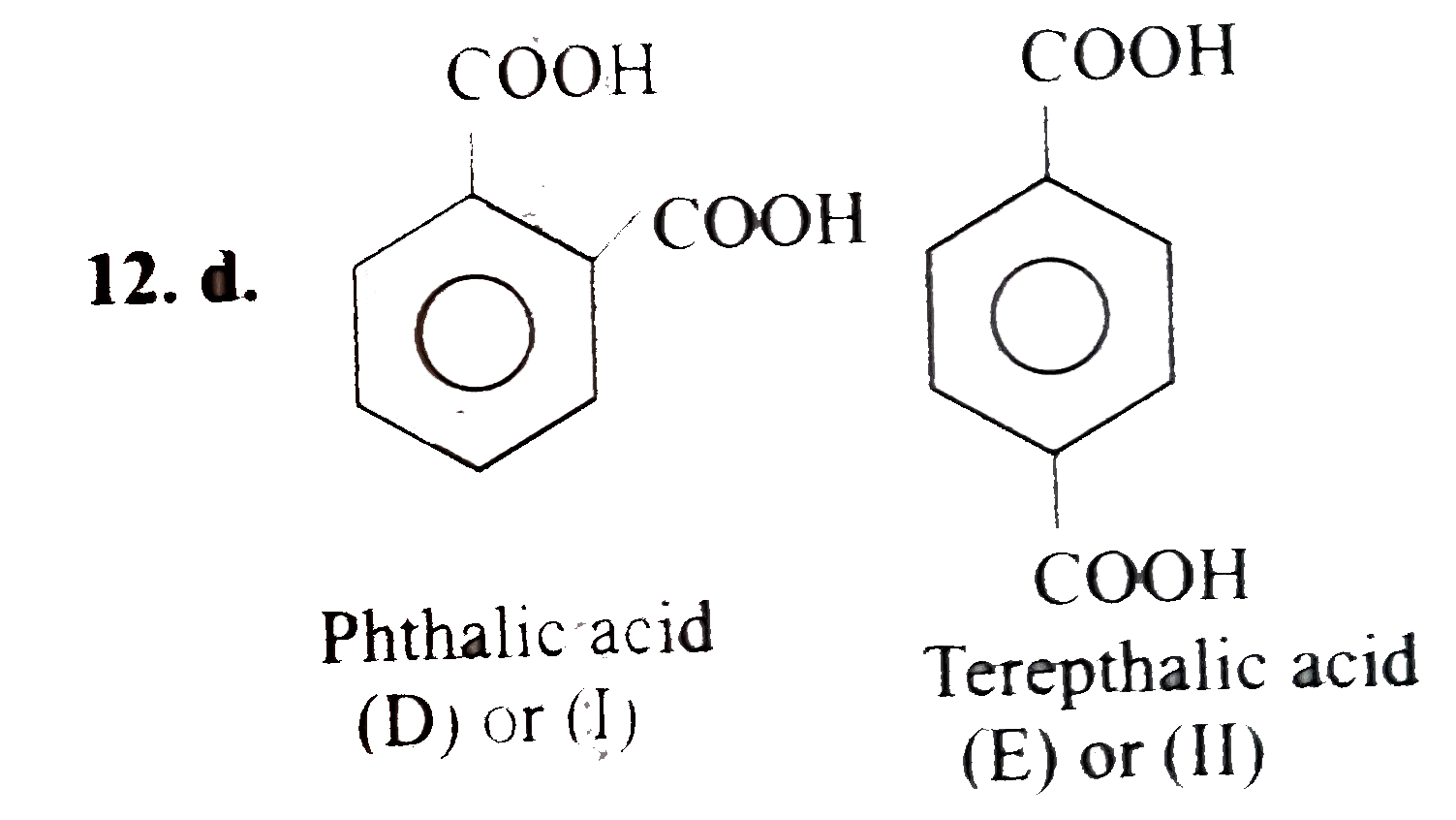Consider the following reaction :
 ,
,
 .
.
The compound D is an ortho-isomer and E is a p−isomer.ThecompoundsDandE, respectively, are :
A
Phthalic and isophthalic acids
B
Isophthalic and phthalic acids
C
Terephthalic and phthalic acids
D
Phthalic and terephthalic acids.
Video Solution
Text Solution
The correct Answer is:D
(d)  .
.
|
Topper's Solved these Questions
- GENERAL ORGANIC CHEMISTRYBOOK - CENGAGE CHEMISTRYCHAPTER - GENERAL ORGANIC CHEMISTRYEXERCISE - Multiple Correct
22 Videos
- GENERAL ORGANIC CHEMISTRYBOOK - CENGAGE CHEMISTRYCHAPTER - GENERAL ORGANIC CHEMISTRYEXERCISE - Single Correct
25 Videos
- GENERAL ORGANIC CHEMISTRYBOOK - CENGAGE CHEMISTRYCHAPTER - GENERAL ORGANIC CHEMISTRYEXERCISE - Concept
16 Videos
- CLASSIFICATION AND NOMENCLATURE OF ORGANIC COMPOUNDSBOOK - CENGAGE CHEMISTRYCHAPTER - CLASSIFICATION AND NOMENCLATURE OF ORGANIC COMPOUNDSEXERCISE - Analytical and Descriptive Type
3 Videos
- HYDROGEN, WATER AND HYDROGEN PEROXIDEBOOK - CENGAGE CHEMISTRYCHAPTER - HYDROGEN, WATER AND HYDROGEN PEROXIDEEXERCISE - Subjective Archive (Subjective)
3 Videos
Similar Questions
Knowledge Check

The compounds (D) and (E ) are:AEnantiomersBDiastereomersCGeometrical isomersDPositional isomers
The compounds (D) and (E ) are:A B
B C
C D
D
Consider the following reaction :

, .
.
The m−isomer of D and E is called :APhthalic acidBIsophthalic acidCTerephthalic acidDNone
Consider the following reaction,

D and E respectively are
View SolutionThe compound (U) is (the major isomer is ):

View SolutionThe E-isomer is
View SolutionThe number of stereoisomers and optical isomers possible for the compound
abdC-Cabd are respectively
View SolutionWhich one of the compound is not isomers of others?
View Solution


